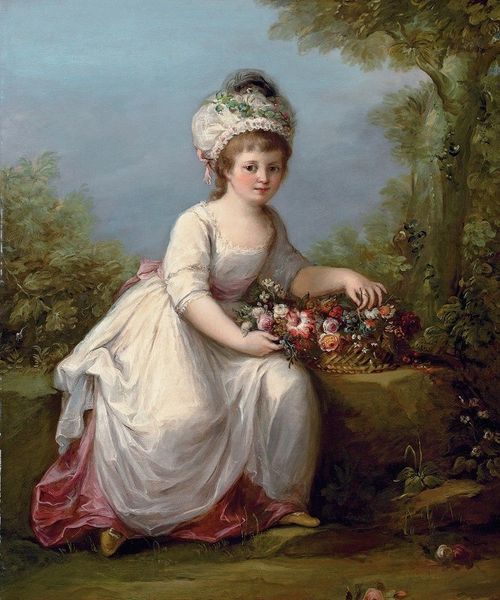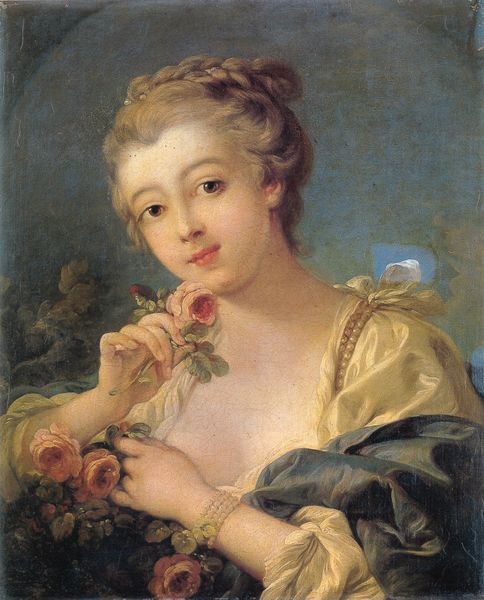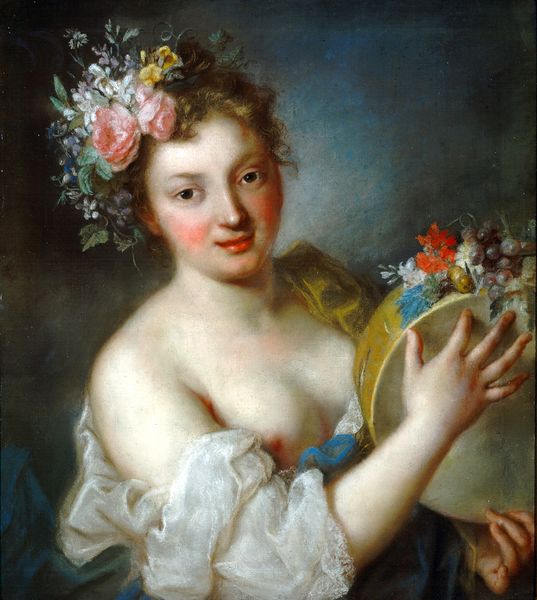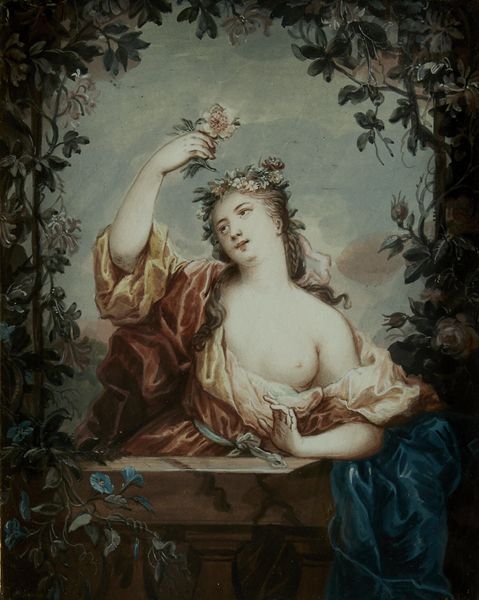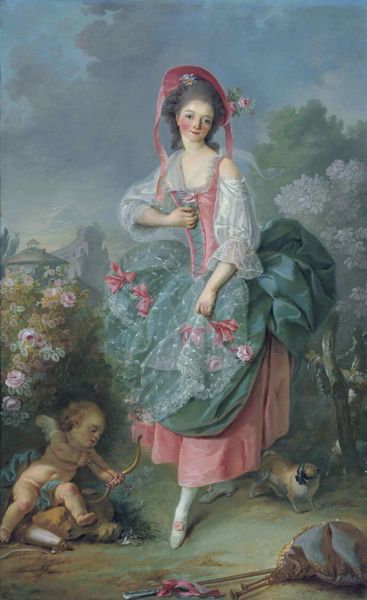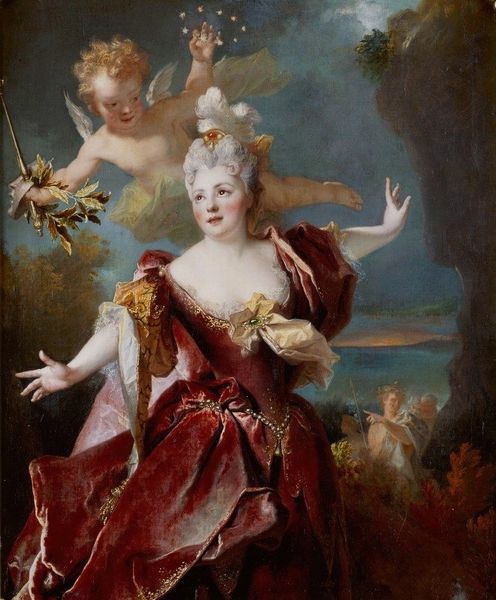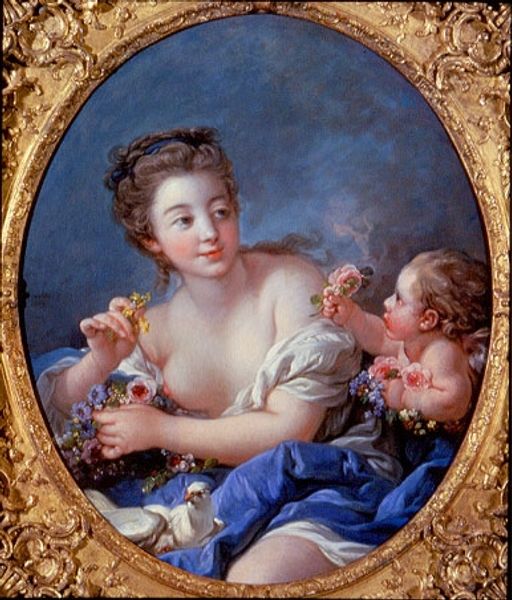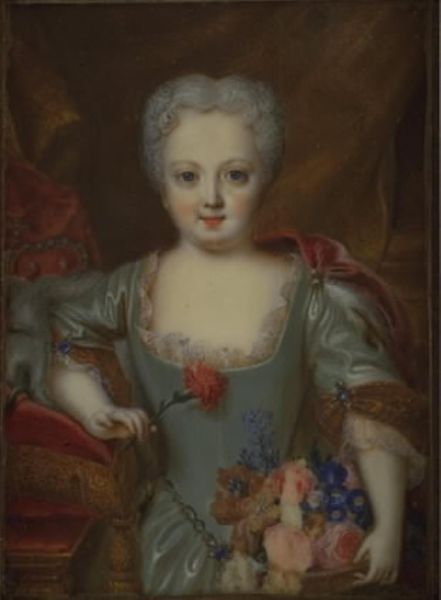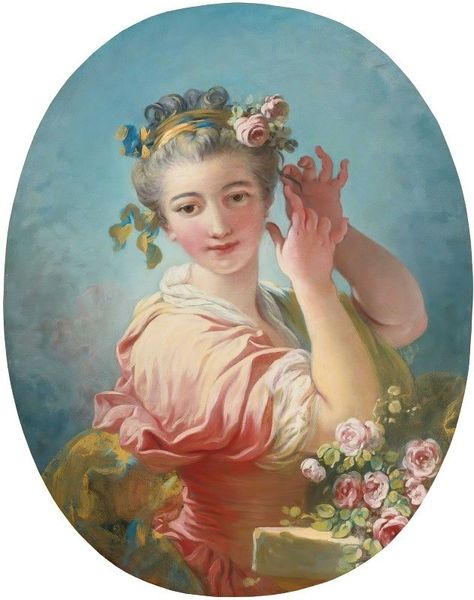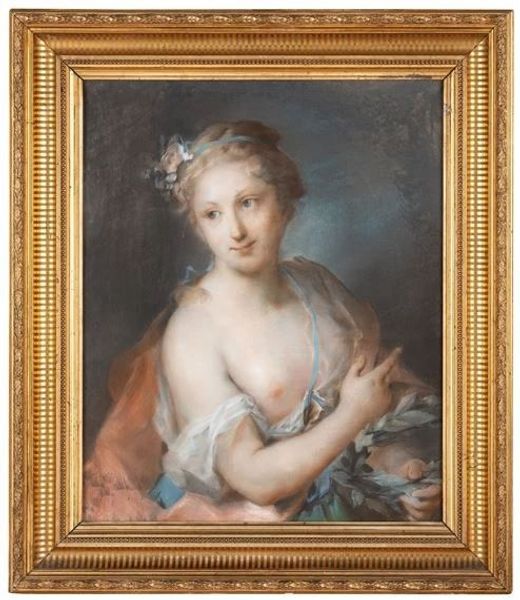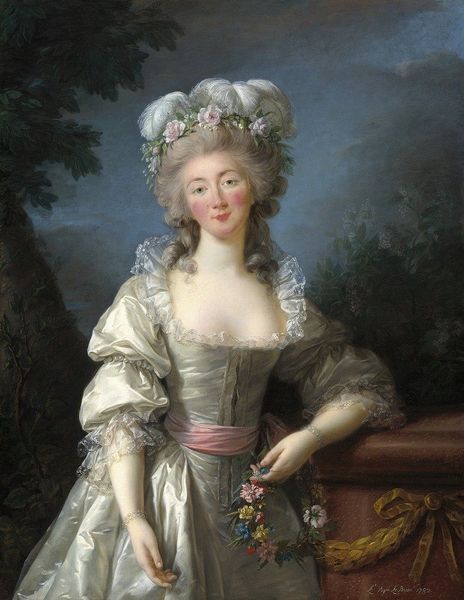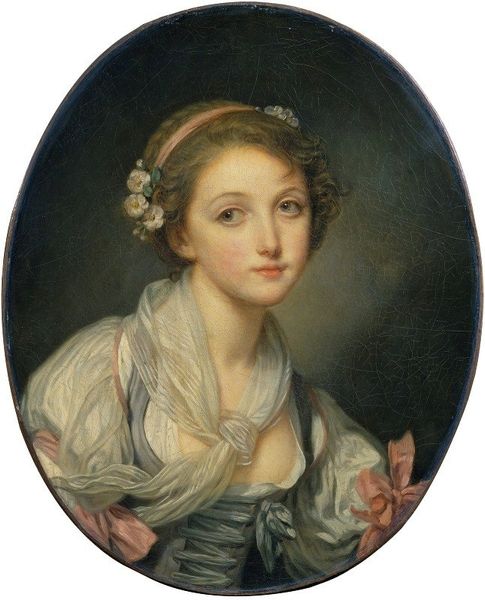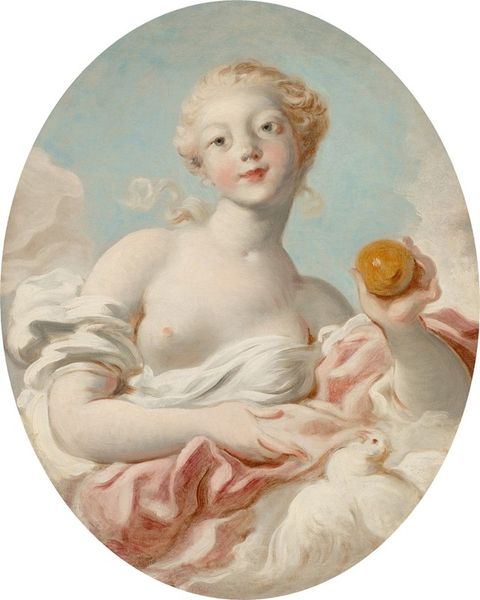
painting, oil-paint
#
portrait
#
allegory
#
painting
#
oil-paint
#
figuration
#
oil painting
#
mythology
#
nude
#
rococo
Copyright: Public Domain: Artvee
Editor: Here we have what seems to be Jean-Baptiste Greuze’s "Flora and Zephyr," an oil painting. The texture looks very smooth, almost porcelain-like, which is interesting considering its subject matter. It's striking how this classical scene has been created using what I assume were fairly ordinary materials and labor. What can you tell me about it? Curator: Precisely. Look at the relationship between the smooth, almost manufactured-looking surface and the naturalistic elements like the flowers. Greuze’s choice of oil paint, the way it’s meticulously applied, wasn’t arbitrary. Consider the socio-economic context: this level of refinement signifies luxury, controlled artistry. How does this calculated "naturalism" relate to the consumption habits and aristocratic patronage of the time? Editor: So, you're suggesting it reflects the artificiality of the Rococo period, even when depicting a natural subject? Curator: Exactly. These materials were handled in a way to project specific meanings tied to class and societal values. It raises questions about who has access to beauty and how beauty is constructed through labor and access to resources. Editor: So, this wasn't about "art for art's sake," but about conveying status. Curator: Indeed. Each pigment carefully placed, speaks volumes about production, accessibility, and societal structure. Consider, too, who was consuming art at this time and what the production process looked like to facilitate that. How does that understanding shape your view of it? Editor: I guess I was seeing the image as pretty. I didn't really consider the production that went into it, or how that relates to broader themes about societal values and materialism at the time. Curator: Thinking about the 'how' as much as the 'what' encourages us to analyze the underlying mechanisms driving its creation. I learned much analyzing this piece with you and value your perspective.
Comments
No comments
Be the first to comment and join the conversation on the ultimate creative platform.

